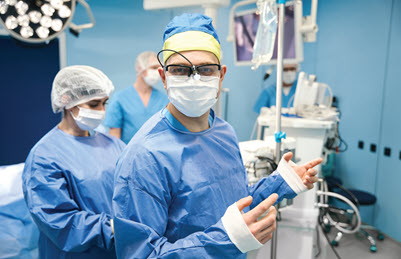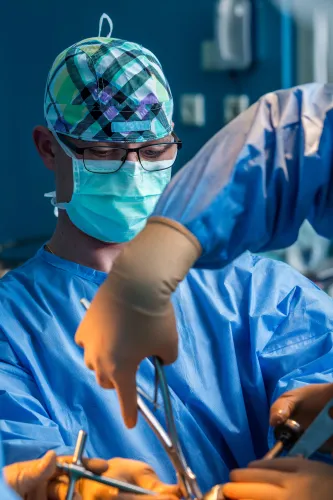General Surgery Coding Alert
Code The Following Surgery Cases — Modifier(s) and All
Check your answers on page 4. Reporting procedures from your general surgeon’s op report is one thing, but figuring out how to code services before and after the patient’s procedure or visit to the operating room (OR) can have its own challenges. Look at the following four scenarios and decide how you’d code each case. Don’t forget to apply any modifier(s) that you think are necessary for accurate billing and reimbursement. Do this: After you’ve tried your hand at these examples, look below to see what our experts have to say. Scenario 1: Your surgeon performs a lesion excision from the patient’s nose with an excised diameter of 2.2 cm. The surgeon intends to perform an adjacent tissue transfer for minimal scarring, but waits for the pathology report to determine if the lesion is malignant and to ensure clear margins. With a pathologic diagnosis of basal cell carcinoma, margins clear, the surgeon performs the adjacent tissue transfer four days later. How should you code the case? Scenario 2: The surgeon performs an enterectomy procedure for a patient with a necrotic bowel section in the ileum. The op report describes the surgeon clamping the distal and proximal margins, resecting the necrotic bowel, then performing an enterotomy at the proximal and distal ends and anastomosing the small intestine. Five days later, the patient presents with abdominal tenderness and a fever. The same surgeon returns the patient to the operating room, reopens the recent laparotomy, identifies signs of infection at the proximal anastomosis junction, takes swab specimens for culturing, and performs peritoneal lavage before closing the site. What is the correct coding for this scenario? Scenario 3: The surgeon performs an appendectomy for a patient with persistent right-lower-quadrant abdominal pain. The appendix is not infected or ruptured. A month later, the patient returns to the surgeon’s office complaining of acid reflux that is causing aspiration when lying down and interfering with sleep. The surgeon talks to the patient about the reflux symptoms and performs a physical exam. The note documents that the surgeon spends 24 minutes in preparation and seeing the patient to perform a history and examination related to the reflux complaint. How should you code this situation? Scenario 4: Your surgeon sees a patient in the office for a lump the patient noticed in her right breast. The surgeon discusses the patient’s symptoms and recommends a mammogram and possibly a follow up fine needle aspiration or biopsy. During the visit, the patient also asks the provider about a painful, inflamed blackhead on her lower abdomen. The physician identifies the blackhead as a sebaceous cyst and decides to treat it in the office that day. The surgeon documents the excised diameter of the cyst as 0.9 cm, and the op note documents cleaning and dressing of the surgical site. What code(s) should you use for the day’s encounter?
Related Articles
General Surgery Coding Alert
- Medicare Physician Fee Schedule:
See How 2024 Proposed Rule Could Affect Your Practice
Expect surgical procedure pay cut … again. General surgeons should be on the lookout for [...] - Query 4 Scenarios:
Code The Following Surgery Cases — Modifier(s) and All
Check your answers on page 4. Reporting procedures from your general surgeon’s op report is [...] - Code 4 Scenarios:
Check Your Scenario Answers — Modifier(s) and All
See the case examples on page 3. Now that you’ve read the four scenarios on [...] - You Be the Coder:
Check Treatment Depth for Debridement Code Selection
Question: We have a case in which the surgeon documents sharp selective debridement with scissors for [...] - Reader Questions:
Focus Items That Count for E/M ‘Time’
Question: Our surgeon has performed an esophageal ablation of polyps for a patient in the past. [...] - Reader Questions:
Code Neoplasm Based On Specific Location
Question: Our surgeon performed a breast biopsy from the “central portion” of the breast. For ICD-10-CM [...] - Reader Questions:
Know When Primary Payer is Medicare
Question: We have a patient on Medicare who is also insured through a group health plan [...]



